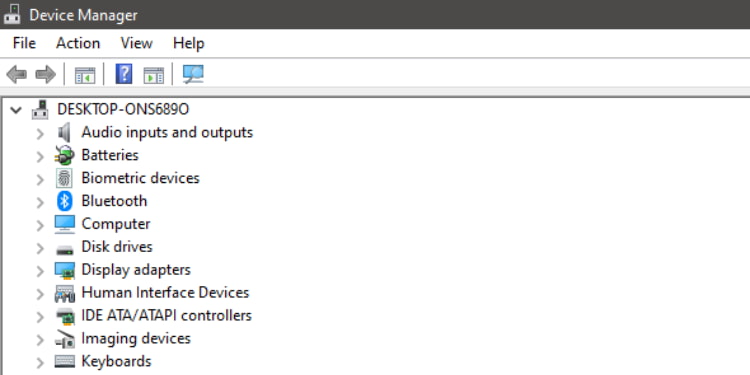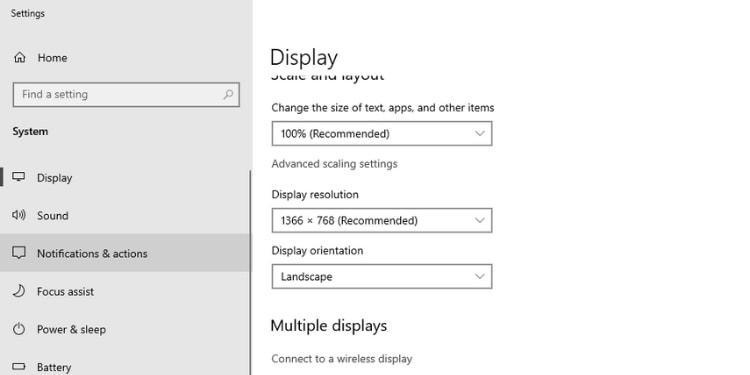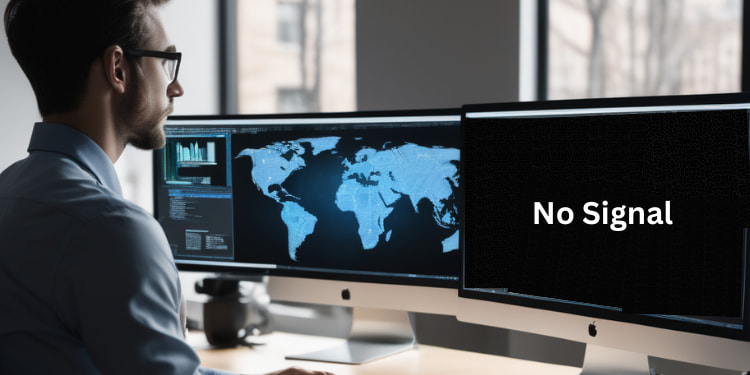Second Monitor Detected but Not Displaying Issue -Fixed 2024
Having a dual-monitor setup is helpful in this multitasking era. However, what happens when your Windows 11 second monitor is detected but not displaying? This is a common issue that needs clarification. Discover how to fix this frustrating issue with easy Windows 10 and 11 solutions. Resolve second monitor detected but not displaying and figure out how to make your second monitor’s black screen visible again.
Before solving, you must understand the problem. If your 2nd monitor detected but not displaying, your operating system detects it but cannot display content. There are a lot of potential causes for this, from basic network problems to more complicated software errors.
Why Second Monitor Detected but Not Displaying Issue?
Solving this problem requires understanding why it happens. The causes include outdated drivers, wrong display settings, and hardware failures.
- Outdated graphics drivers: Often the cause, especially after OS upgrades.
- Incorrect Display Settings: Misconfigured settings can cause display issues.
- Hardware Connectivity Problems: Monitor, cable, or port malfunctions are examples of hardware connectivity problems.
- OS compatibility issues: Especially when switching from Windows 10 to 11.
Method 1: Inspect Physical Connections
Symptom: If your second monitor is detected but not displaying, physical connections may be the problem.
Steps:
Safe Connections
- Check the computer-second monitor wires. Plug both cable’s ends tightly.
- HDMI, DisplayPort, and DVI cables should be checked for damage or bent pins. Change the cable if needed.
Alternative Ports and Cables
- Try connecting the second monitor to separate graphics card or motherboard connections. Doing so helps eliminate the possibility of problems related to a single port.
- Use another cable to connect the display to your computer. There is a possibility that cables will become defective.
Method 2: Restart Your Computer
Symptom: A computer restart can fix display issues following a software update or settings change.
Steps:
- Close all apps and save your work.
- Open “Start” and choose “Restart.”
- Let your computer shut down and restart.
- After restarting, verify the second monitor’s display.
Method 3: Update or Reinstall Graphics Drivers
Symptom: Outdated or corrupted graphics drivers might cause display issues.
Steps:
Update Drivers

- Right-click “Start” -> “Device Manager.”
- See your graphics card under “Display adapters.”
- Right-click the graphics card and select “Update driver.”
- Select “Search automatically for updated driver software” and follow the on-screen instructions to upgrade.
Drivers Reinstallation
- Right-click your graphics card in Device Manager and select “Uninstall device.”
- Confirm uninstallation.
- Restart your computer.
- Windows automatically reinstalls the graphics driver after the restart. Verify that the second monitor works.
Method 4: Tweak Display Settings
Symptom: Incorrectly configured display settings can disable the second monitor.
Steps:

- Right-click the desktop and choose “Display settings.”
- Scroll down to “Multiple displays”.
- Select “Extend these displays.” Your second monitor becomes an extended display.
- Check the second monitor’s “Resolution” settings. Please set it to your monitor’s resolution.
Method 5: Manually Detect Display
Symptom: Windows may not identify the second monitor.
Steps:
- Right-click the desktop and choose “Display settings.”
- Scroll down and click “Detect” under “Multiple displays”.
- Windows will search for the second monitor. If successful, the monitor should display.
Method 6: Ensure OS is Up-to-Date
Symptom: Updates may fix software display and compatibility issues.
Steps:
- After clicking “Start,” pick “Settings” (the gear symbol).
- Select “Windows Update” in settings.
- Click “Check for updates” to let Windows find and install updates.
- After installing updates, restart your computer and test the second monitor.
Method 7: Utilize Windows Troubleshooter
Symptom: Windows’ built-in troubleshooting tools automatically determine and fix display faults.
Steps:
- Right-click the desktop and choose “Display settings.”
- Scroll down to “Multiple displays” and select “Troubleshoot”.
- Run the troubleshooter as instructed on-screen. Windows will try to fix problems.
Troubleshooting a second monitor detected but needing to display begins with these procedures. If these procedures fail, use the advanced troubleshooting methods below.
Advanced Troubleshooting Techniques
Method 8: BIOS/UEFI Settings
Symptom: Some BIOS/UEFI display settings could affect the second monitor’s functioning.
Steps:
Access BIOS/UEFI: Enter BIOS/UEFI after restarting. This is usually done by pressing F2, Del, or Esc during startup. Check your motherboard or computer manual for the key.
Navigate to Display Settings: Search the BIOS/UEFI interface for display settings. Various brands and models have various settings.
Adjust Display Settings: Your system may have many displays, integrated graphics, or primary displays. Test these adjustments to see if they fix it.
Save and Exit: Save and exit BIOS/UEFI after changing settings. Your computer will restart with fresh settings.
Method 9: Monitor-specific Settings
Symptom: Some monitor settings affect dual-monitor compatibility.
Steps:
On-Screen Menu: Many displays include an on-screen menu accessible via physical buttons. Learn how to access this menu from your monitor’s manual.
Explore Settings: Look for input sources, display modes, and monitor features in the on-screen menu.
Check Input Source: Select the correct input source (e.g., HDMI, DisplayPort) for the second monitor.
Factory Reset: Some displays have a menu for factory resets. All settings can be reset to their defaults, which may resolve conflicts.
Method 10: Check Monitor Compatibility
Symptom: Compatibility issues may occur after upgrading to Windows 11.
Steps:
Check Windows 11 Compatibility: If you’ve upgraded to Windows 11 and are having display troubles, ensure your monitor is Windows 11-compatible. Visit the monitor manufacturer’s website or Windows compatibility listings.
Monitor Firmware Update: Some monitors receive firmware updates to improve compatibility. The manufacturer’s website may have firmware upgrades for your monitor.
Contact Manufacturer Support: For help with compatibility concerns, contact the monitor manufacturer’s customer service.
When to Seek Professional Help
Symptom: If none of the following approaches work and your second monitor is still not displaying, consult a professional.
Steps:
Technical assistance: Contact computer and monitor manufacturer assistance. They detect hardware issues and offer specialized support.
Local Repair Service: When your computer and monitor are out of warranty, and you can’t figure out the problem, take them to a local repair shop. A technician can diagnose and fix extensively.
Consult a Certified Professional: Complex or hardware-related issues may require a certified computer technician or IT professional. They offer skilled advice and solutions.
FAQs
Why is my second monitor connected but not displaying?
Weak connectivity may prevent your second monitor from displaying. Fix any loose wires and ensure the graphics drivers are current.
How do I fix a black screen on my second monitor?
Fix a black screen on your second monitor by checking cable connections, updating drivers, and adjusting display settings.
How do I factory reset my monitor?
Find the on-screen menu, go to settings, then select factory reset to reset your monitor to factory settings.
Why is my monitor saying no signal?
Your monitor may display “no signal” due to loose connectors, an improper input source, or a graphics driver error.
Conclusion
Simple inspections and advanced troubleshooting can fix a second monitor detected but not displayed. This article covers BIOS settings, monitor-specific adjustments, and physical connection security.
Because technology is complicated, patience is often required to solve problems. These methods should restore your dual-monitor setup in Windows 10 or 11.


![Mouse Lagging on Second Monitor [5 Easy Methods 2024]](https://techswow.com/wp-content/uploads/2024/01/Mouse-Lagging-on-Second-Monitor.webp)
![How to Change Input on MSI Monitor [Simple Steps 2024]](https://techswow.com/wp-content/uploads/2023/12/Add-a-heading-3.png)